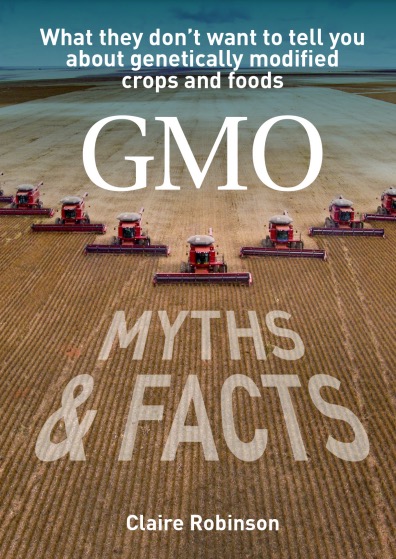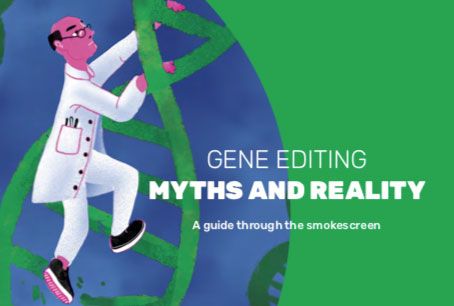NOTE: Earlier we circulated comments by Dr Doug Gurian-Sherman in response to Mark Lynas's claim that GM is "safer and more precise" than conventional breeding.
http://www.gmwatch.org/latest-listing/52-2013/14591
Lynas said GM was "safer and more precise than conventional breeding using mutagenesis for example; GM just moves a couple of genes, whereas conventional breeding mucks about with the entire genome in a trial and error way."
We've since received additional comments on Lynas's claims from another scientist, which are reproduced below.
These comments make clear that Lynas is getting his GM science education from a very restricted range of expertise.
For those who are interested, there's more on mutagenesis breeding here:
http://bit.ly/Qr2HXH
More on cisgenics/intragenics here:
http://bit.ly/V8RdtW
And here's Prof John Vandermeer's verdict on the state of Lynas's science education:
http://www.foodfirst.org/en/GMO+uproar+in+EU
---
---
Scientist's comments on Mark Lynas's claim that GM is "safer and more precise" than conventional breeding
Published by GMWatch
10 February 2013
1. "Insertional mutagenesis" in genetic engineering is the result of inserting the new genes. It is inherent to GM technology. This set of mutations [resulting from insertional mutagenesis] is unique to recombinant DNA technology [genetic engineering]. Insertional mutagenesis is estimated by Schubert to affect about 1-5% of the total genes of the host genome. Several data and articles support this. It means that in a plant that has 50,000 genes, 500-2500 genes can be affected.
2. With traditional breeding, gene exchange and inheritance is not random. There are rules. Certain characteristics move together, like red hair and fair skin, but WE DO NOT KNOW or UNDERSTAND THOSE RULES.
3. Cisgenesis, although it uses genes from the same species, also involves the problem of "insertional mutagenesis", just like any other type of gene transfer. Gene silencing needs something to be inserted, so this also involves insertional mutagenesis.
4. Mutagenesis induced by radiation, chemicals, or any other means [what Lynas calls "conventional breeding using mutagenesis"] induces only point mutations (a change in an amino acid in the protein chain), but it can never insert a new or a foreign gene, no matter how hard we try.
Another scientist comments on Lynas's claims of GM precision
- Details









